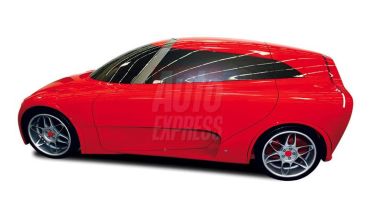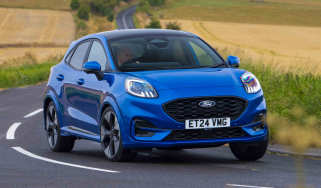Volvo Tandem
It's a Volvo, but not as we know it! Forget load-lugging estates, the company is planning a shock move into the city car market with this wild-looking machine. And we're the first magazine in the world to drive it.
Since the Smart's launch in 1999, we've been waiting for a city car to approach its groundbreaking ingenuity. The Tandem could actually outsmart it by being narrow rather than short. It's fun to drive, looks good and it's practical for city life. And with Volvo's reputation for safety, it has the usual small car crash protection.
It's a Volvo, but not as we know it! Forget load-lugging estates, the company is planning a shock move into the city car market with this wild-looking machine. And we're the first magazine in the world to drive it.
It might be called a Tandem, but the car is anything but bicycle-like. The black model in our pictures is a driving prototype to enable the firm - and us - to assess the concept's viability. Meanwhile, the red car shows how the bodywork would have looked if the Volvo Concept Centre in California had not run out of time before our visit.
From the squared-off front wings to the raised-up tail, it's easy to spot the Volvo heritage. And despite the unfinished shell, it's not hard to imagine the Tandem on a busy urban street. At 130cm wide, it's about half a metre narrower than a conventional car, and Volvo is considering shrinking it further without compromising safety.
Used - available now

2017 BMW
2 Series Gran Tourer
28,000 milesAutomaticPetrol1.5L
Cash £15,700
2022 BMW
3 Series
32,500 milesAutomaticPetrol2.0L
Cash £24,200
2023 BMW
X2
22,603 milesAutomaticPetrol2.0L
Cash £21,225
2023 Tesla
Model 3
32,367 milesAutomaticElectric
Cash £20,700Sitting in the Tandem is a little disconcerting, but the visibility is excellent. And being so close to the ground is no problem. In fact, because of the very narrow track, it's reassuring to have such a low centre of gravity. While aware of potential problems, engineers have been careful to design stability into the car from the outset - and it shows. The Tandem feels very planted on the road, rather like a go-kart with car-size wheels, although we never got to drive it at more than 30mph.
And because it is so narrow, it's very easy to place, which would ensure nipping through traffic would be a doddle. It also makes it great fun, like riding a futuristic motorbike. Volvo placed the engine in the rear so that the front can hold luggage and have sufficient crash protection. This prototype has an electric motor, but project leader Doug Frasher revealed: "We could put a petrol engine in there or a small diesel, it might stay electric or we could even use a hybrid. We'll decide after looking at the safety issues."
A small petrol unit is the favourite, because Volvo wants the Tandem to appeal to as wide a range of drivers as possible. Therefore, on Volvo's wish list are a top speed of 90mph, a price of around £10,000 (just above Smart territory) and the driving pleasure of a motorbike. Volvo seems to have achieved the last of these - let's hope it manages the other two as well.


